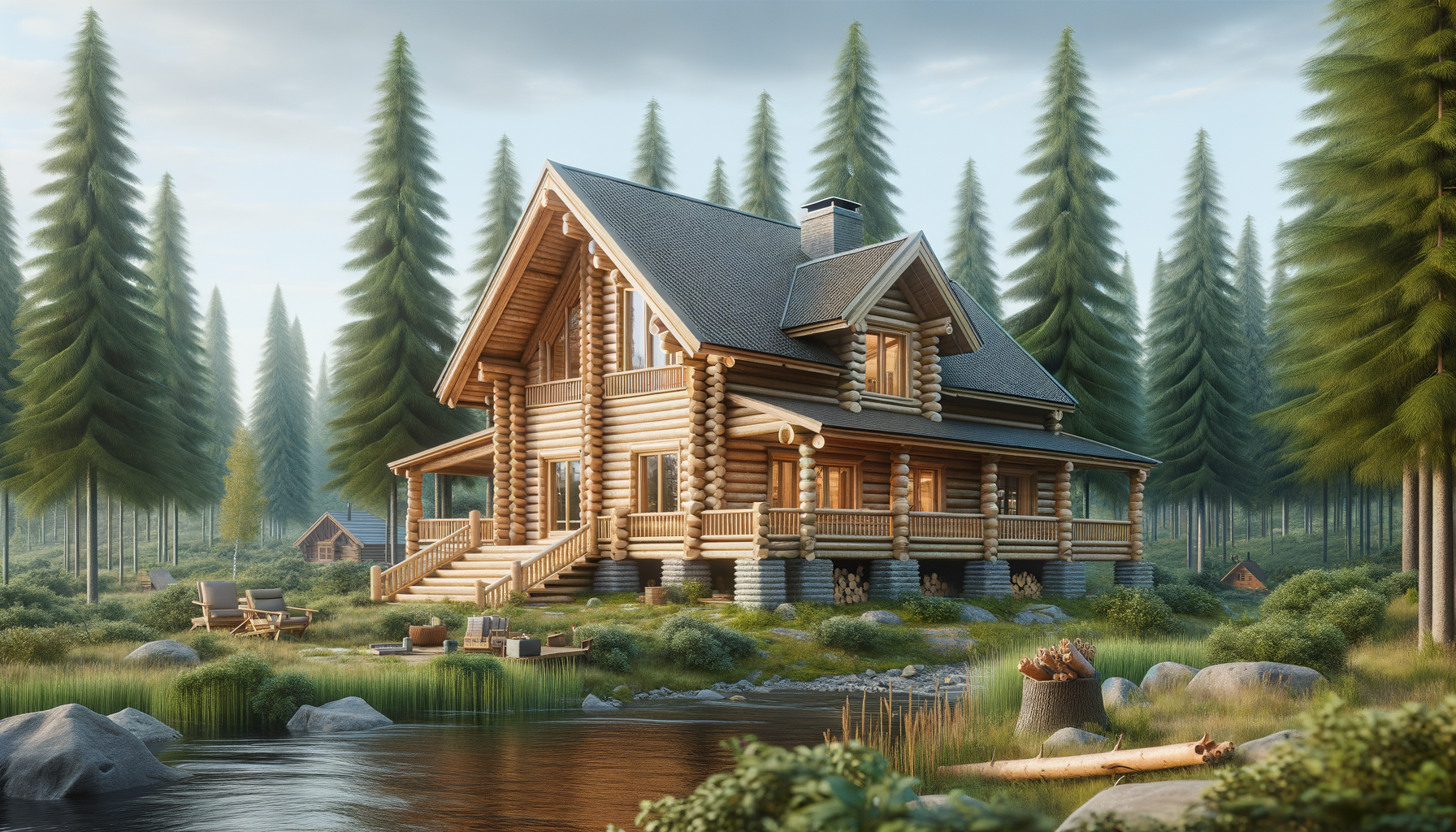Understanding Prefab Log Cabins
Prefab log cabins have emerged as a popular choice for those seeking a rustic retreat or a cozy year-round home. These structures, pre-manufactured and assembled on-site, offer a blend of traditional charm and modern convenience. Prefab log cabins are designed to provide an efficient and cost-effective building solution, reducing the time and labor typically associated with traditional log cabin construction.
One of the primary advantages of prefab log cabins is their ease of assembly. The components are manufactured in a controlled environment, ensuring precision and quality. This process minimizes waste and reduces the environmental impact compared to conventional building methods. Additionally, prefab cabins often come with customizable options, allowing homeowners to select layouts, finishes, and features that suit their personal tastes and needs.
Moreover, the cost-effectiveness of prefab log cabins is a significant draw. By streamlining the construction process, these cabins can be more affordable than traditional log cabins. This affordability, combined with the aesthetic appeal of natural wood and the cozy ambiance it creates, makes prefab log cabins an attractive option for many.
Design Options and Styles
Prefab log cabins come in a variety of styles and designs, catering to diverse preferences and needs. From rustic, traditional designs to sleek, modern aesthetics, there is a prefab log cabin to suit every taste. The choice of design often depends on the intended use of the cabin, whether it be a weekend getaway, a full-time residence, or a guest house.
Rustic designs typically feature classic log construction with natural finishes, exuding a warm and inviting atmosphere. These cabins often include features such as stone fireplaces, exposed wood beams, and large windows to embrace the surrounding nature. On the other hand, modern prefab log cabins may incorporate contemporary elements like minimalist design, open floor plans, and energy-efficient features.
Customization is another key aspect of prefab log cabin design. Homeowners can select from various floor plans and modify aspects such as the number of bedrooms, kitchen layout, and bathroom configurations. Additionally, exterior options may include different wood types, stains, and roofing materials, allowing for a personalized touch that aligns with the owner’s vision.
Cost Considerations and Budgeting
When considering a prefab log cabin, understanding the cost implications is crucial. The overall cost of a prefab log cabin can vary significantly based on factors such as size, design complexity, and material choices. On average, prefab log cabins can range from a few thousand dollars for small, basic models to upwards of several hundred thousand for larger, luxury designs.
Key cost components include:
- Base Price: This includes the cost of materials and manufacturing. It’s important to compare different suppliers to ensure competitive pricing.
- Site Preparation: Costs for clearing land, laying foundations, and connecting utilities can add up quickly.
- Customization: Additional features and upgrades, such as high-end finishes or energy-efficient systems, will increase the overall cost.
- Transportation and Assembly: The logistics of delivering and assembling the cabin on-site can also impact the budget.
Budgeting for a prefab log cabin involves considering both the initial investment and ongoing maintenance costs. While these cabins are generally low maintenance, regular upkeep is necessary to preserve their appearance and structural integrity. Homeowners should plan for expenses related to sealing, staining, and repairing any wear and tear over time.
Environmental Impact and Sustainability
Prefab log cabins are often praised for their sustainability and reduced environmental impact compared to traditional construction methods. The controlled manufacturing process allows for efficient use of materials, minimizing waste. Additionally, many prefab log cabins are designed with energy efficiency in mind, incorporating features such as high-performance insulation, energy-efficient windows, and renewable energy options like solar panels.
The use of natural materials, such as sustainably sourced wood, further enhances the eco-friendly appeal of prefab log cabins. Wood is a renewable resource, and when harvested responsibly, it can contribute to sustainable building practices. Furthermore, the thermal properties of wood provide natural insulation, helping to reduce heating and cooling costs.
However, it’s essential for prospective cabin owners to consider the environmental impact of their specific cabin. This includes evaluating the sourcing of materials, the energy efficiency of the design, and the long-term sustainability of the construction. By choosing a reputable manufacturer and prioritizing eco-friendly options, homeowners can ensure their prefab log cabin aligns with their environmental values.
Practical Tips for Choosing a Prefab Log Cabin
Selecting the right prefab log cabin involves careful consideration and planning. Here are some practical tips to guide prospective buyers:
- Define Your Purpose: Determine how you intend to use the cabin, whether as a seasonal retreat, permanent residence, or rental property. This will influence the size, design, and features you prioritize.
- Research Manufacturers: Look for manufacturers with a solid reputation for quality and customer service. Reading reviews and seeking recommendations can help identify trustworthy options.
- Consider Location: The cabin’s location will impact design choices, such as insulation needs for colder climates or ventilation for warmer areas. Local building codes and regulations should also be taken into account.
- Plan for the Future: Consider the potential for future expansions or modifications. Opting for a flexible design can accommodate changing needs over time.
- Budget Wisely: Establish a realistic budget that considers all costs, including site preparation, customization, and maintenance. It’s wise to allocate a contingency fund for unexpected expenses.
By approaching the decision with careful planning and research, prospective cabin owners can find a prefab log cabin that meets their needs and enhances their lifestyle.




Leave a Reply